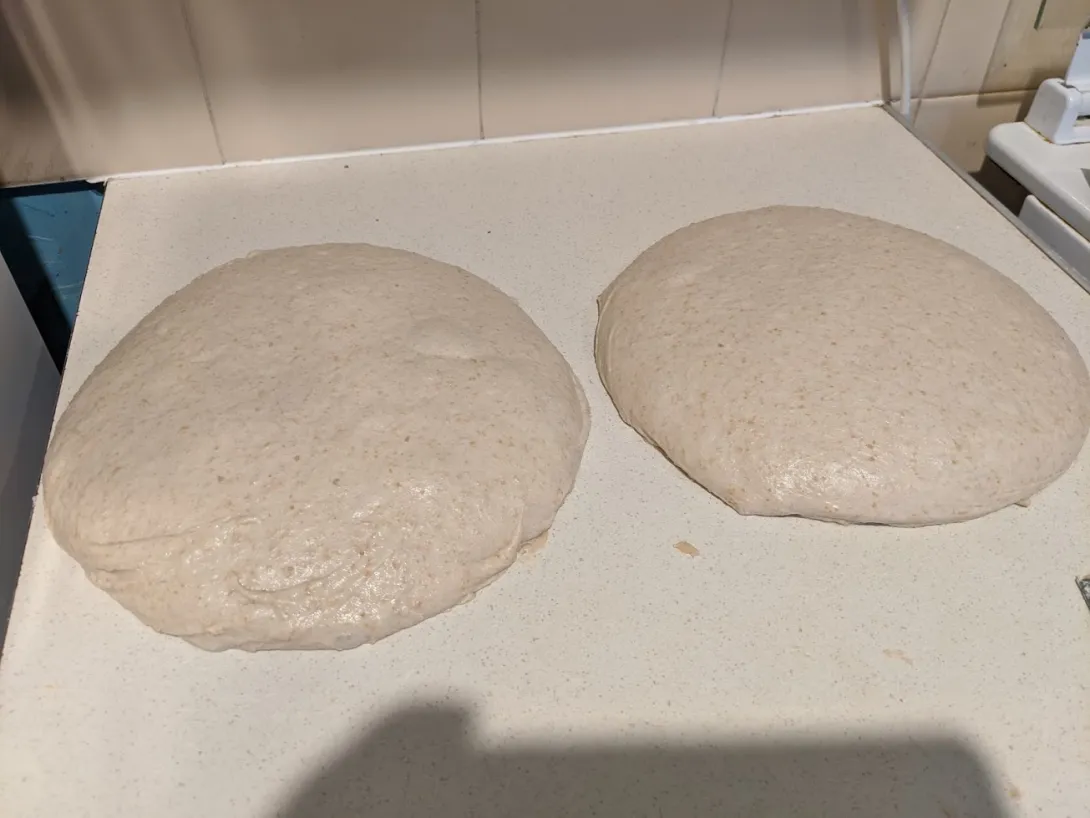
Hi All,
I'm having an issue with pretty much all my baked goods, but I'm posting here as it becomes more difficult to handle when I now got into sourdough baking.
Anytime I follow baking recipes online, for anything, any website, etc. my batter / dough / bread will be "looser" than in the video or more moist. Usually, this is not much of an issue, it still works out well.
However, I recently started getting into sourdough. Now I have a very immature starter (6 days) but thought I'd give it a go anyway, so I can see how the taste changes as my starter grows older.
I followed the basic recipe from Joshua Weissman:
https://www.youtube.com/watch?v=eod5cUxAHRM&t=240s
It worked very well, even my levain passed the float test at the 6 hour mark which I was surprised at for such an immature starter. However, when it came to shaping the loaves I encountered the aforementioned problem.
I pre-shaped the loaves like he did, and let them bench rest for 30 minutes like he does. After thirty minutes, his dough stayed "intact" in a nice boule. My dough became a fluid pancake, see attached photo.
For context, I live in the UK, so not sure if it's due to humidity (according to a weather website it was at 80% when I was shaping it)?
I did a quick calculation of his dough and it seems to be a 72% hydration bread, which is not all that much is it? Usually I read sourdoughs have 80-90%, so 72% should be quite firm and not so liquidy?
I am using Dove's Organic Flour: https://www.dovesfarm.co.uk/products/organic-flour?view=all and tap water which here in the UK is usually pretty good.
Any idea / suggestion what could be causing all this "fluidity" in my baking? It doesn't matter what recipe, even when I follow an american recipe and go by volume and not by weight, I still have a very fluid dough :/
Tips / ideas of how to have a more plyable dough rather than a wet one? :)
Thank you guys in advance!
All baked stuff? Even a commercial yeast bread? You are going by weight - not volume? Could be as simple as that.
Yep, all baked stuff I bake at home.
I use both, weight and volume, depending on what the recipe calls for. For this sourdough I went by weight, as the recipe.
I’ve read that a lot of European flours absorb less water than North American flours. Joshua is US based and is likely using US flours, so although his flour absorbs the 72% hydration without a problem, yours may not. Try reducing the hydration to say 65% and try again. For sure the ambient humidity is a factor, flour stored in the desert will absorb more water than flour stored in a humid climate.
Benny
Thank you, that seems reasonable. But doesn't lower hydration mean less oven spring?
I baked those breads now and even though they taste delicious, as expected it didn't have much oven spring :/
https://imgur.com/f8af02b1-b969-4914-b67b-b6369f15d682
No lower hydration doesn't necessary lead to less oven spring. Remember the reason that you might need to reduce hydration is that the European flour already has more absorbed water in it because of local conditions.
Ok thank you, I'll try it next time! :)
If it's happening with everything, it must be something that's used in everything. I'd have to say flour. Sometimes a bad batch makes it's way through - it does happen. I've had a bag or 3 over the years that just wouldn't work - by they I mean gluten just didn't form properly or at all - and you're left with a bowl of glop. Easy test, maybe, try a different flour.
6 day old starter is a concern, but as it's with everything, it's gotta be more than that.
I've been using this flour for a few years now, so if it's a bad batch it's a bad flour overall. I don't really want to switch as it's the only affordable organic flour around :/
If it keeps misbehaving after changing hydration levels and improving my shaping technique, I'll give a different flour a go though!
I recently learned that you apparently can overshape your dough and I identified that to be the cause of my soupy doughs (similar Even though I was using high gluten flour (14,5%), the breads were still flat-ish. I was wondering why even no-knead breads online could have great oven springs and open crumb, so after a lot of research I found out if you handle your dough too much during pre-shaping and final shaping, the outer skin can tear, so tension and pressure inside can't built up anymore and you end up with flat breads.
So when pre-shaping and final shaping your dough, handle it carefully (but still firm) and bring it into the desired shape. Nothing more, no more tightening the skin further, that's it, leave it, you're done.
(https://youtu.be/bV3at6kqnWw?t=145 this is what made me realize what I'm doing wrong)
Haha I watched that Video like 5 times now, going to try to employ all those tips next time for a better oven spring!
I feel like maybe I also over-fermented this batch?
Excited for trying it out next time!
Here is a trick I recently discovered for monitoring dough growth and prevent over-fermentation (at least during bulk fermentation).
http://www.thefreshloaf.com/node/65182/tip-small-portion-control
Thank you, that's quite smart! :)